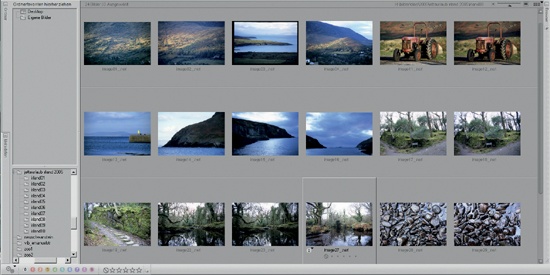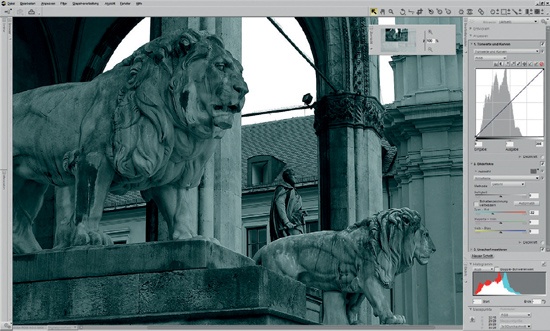Capture’s .NET-based user interface is not very clear and not particularly intuitive, but it can nevertheless be mastered in a relatively short space of time. Experienced Photoshop users switching to Capture will have to get used to a completely different approach to image handling and an unfamiliar user interface. But with new features like U Point Technology, Capture NX 2 is definitely worth a try.
Experienced users of the old Nikon Capture program will sorely miss the lightbox tool, which was retired with the introduction of Capture NX. This feature displayed all images contained in the current folder as thumbnails, making image selection quick and easy. The new browser’s default behavior is a little irritating; it collapses the entire browser into the application’s sidebar when you select and open an image. This behavior is acceptable for use on smaller monitors, as it saves space on the desktop, but users of larger monitors or multi-monitor desktops quickly find it annoying.
To work around the problem, you simply need to undock the browser window from the sidebar by clicking the small triangle icon in the browser’s title bar. The browser is not particularly suitable for simple image viewing, as it is fairly slow, especially when viewing large numbers of files simultaneously. Other programs, such as Nikon View NX, are better suited to the job and have much better caching functionality, making viewing a faster, smoother task.
Capture NX 2’s image processing tools are organized into Palettes, which function differently from those you might be familiar with in Nikon Scan. The File Directory, Browser, IPTC Information, Bird’s Eye, Photo Info, and Edit List toolsets each have their own palette. The most important of these for daily use is the Edit List palette, which differs from the one in Nikon Scan in that certain functions (such as LCH) are no longer integrated into the palette itself. If you open the LCH tool using the menu bar, an entry is automatically generated in the Edit List. Every additional editing step then produces its own entry in the list, making it simple to reconstruct exactly which changes you have applied to your image and in what order.
The only disadvantage of this system is that when you apply large numbers of changes to an image, the list takes up a significant amount of space on the desktop. The major advantage is that you can undo each change selectively with a single click on the appropriate step, making it very easy to see what effects you have achieved with the changes you have applied.
Implementing a similar feature would benefit many other image processing programs (including Photoshop), and is a great help to image processing beginners. Each version of the image can be saved under its own name, and you can return to the original version of the image at any time with a single click.
All palettes are docked to the application’s sidebars by default, but can be scaled and placed however you like on the desktop. If you should discover that you can no longer find a palette, you can use the Window menu to recall each palette manually.



